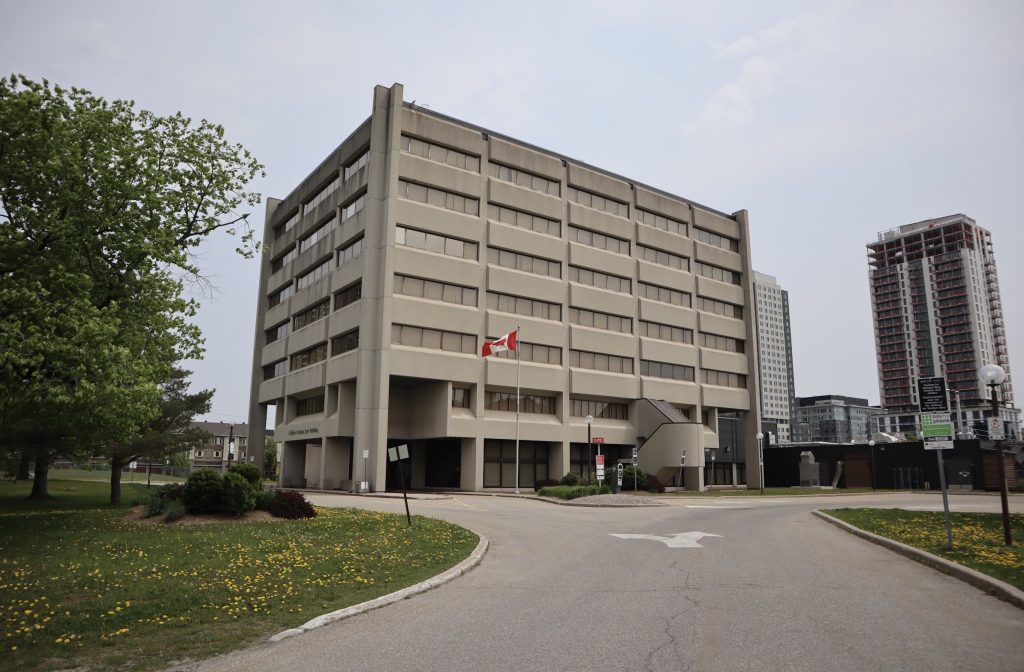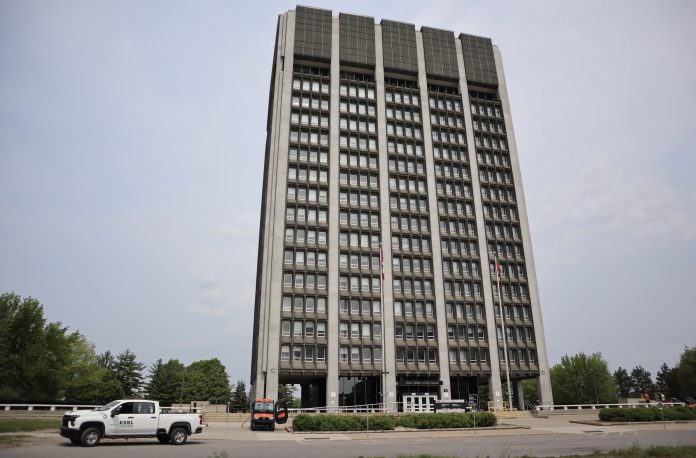By Charlie Senack
Two federal office buildings near Tunney’s Pasture are among 10 in the National Capital Region up for disposal.
The move comes as the federal government looks to reduce its physical space and shift to a hybrid work model.
The long-term real estate portfolio plan, which will see the buildings unloaded in the next couple of years, is looking to optimize remaining office space while reducing greenhouse emissions and lowering operating costs.
“As the plan evolves, our goal is to improve and transform our office portfolio so that we can provide federal employees with efficient, modern, accessible and green workplaces where they can continue to deliver services to Canadians,” Public Services and Procurement Canada (PSPC) said.
The Brooke Claxton Building and Annex at Tunney’s Pasture, which has been designated as a heritage building, alongside the nearby Graham Spry Building, are among those on the “disposal list”.
PSPC office space services more than 260,000 federal public servants from 103 departments and agencies across Canada.
“The shift to a hybrid work environment permits a more effective utilization and sharing of space that was simply not possible before the pandemic when desks were assigned to public servants on a one-for-one basis,” PSPC said. “The Government of Canada’s shift to a hybrid work model will enable us to relocate these employees into modern accommodations.”
PSPC said the buildings could be revitalized into affordable housing units or could be used as community space.

The future of Tunney’s Pasture
The changes come as Tunney’s Pasture is about to face its own major transformation in the coming years. A long-term revitalization plan by the Canadian government hopes to transform the 49-acre office site “into a vibrant, sustainable, mixed-use urban community.”
While plans are slow moving, artistic renderings propose an urban Main Street at the complex with shops, apartments and businesses. Lower density residential units are also part of the proposal, with a new district and heating cooling center on the northwest corner.
These plans were released in 2014 when a 25-year master plan was unveiled. It called for 3,400 to 3,700 residential units to be built on the site, alongside up to 150,000 square metres of federal office space, which would house up to 25,000 employees.
Tunney’s Pasture was expropriated by the federal government in 1947. Settlements with former property owners tallied around $700,000. Initial excavation work began in 1950 with the first four buildings on the site completed in 1956.
Before the COVID-19 pandemic, the site housed around 13,000 employees. Because many now work from home — at least part-time — the implementation plans are being reassessed and analyzed.
The site currently houses at least 18 federal office buildings and the light rail transit station which opened in 2019.
Jane’s Walk
Inspired by late community activist Jane Jacobs, the Jane’s Walk festival is an annual event taking place across the world, where community members lead free neighbourhood walks for their fellow neighbours, all in the spirit of sharing stories and information, while connecting with others.
On Sun. May 7, KT’s Dave Allston led Ottawa’s largest Jane’s Walk at Tunney’s Pasture. One hundred and fifty walkers attended on a beautiful spring morning to learn more about the history of the Tunney’s site, from the Indigenous pathway origins of the first Richmond Road that went through the site, to the arrival of the trains, proposed industrial uses, the shantytown, the nuclear reactor, animal testing facilities, and more – all of which were experienced on the exact spot where they took place.
Allston partnered for the Walk with Tara Ouchterlony from Neighbours for Tunney’s to also discuss the proposed redevelopment of the site and what local residents are fighting to see in the future plans.
“It was a fun, informative afternoon of connecting, for sure,” said Allston.


